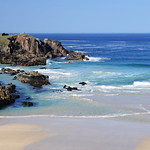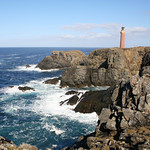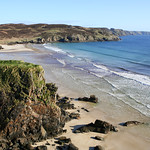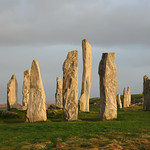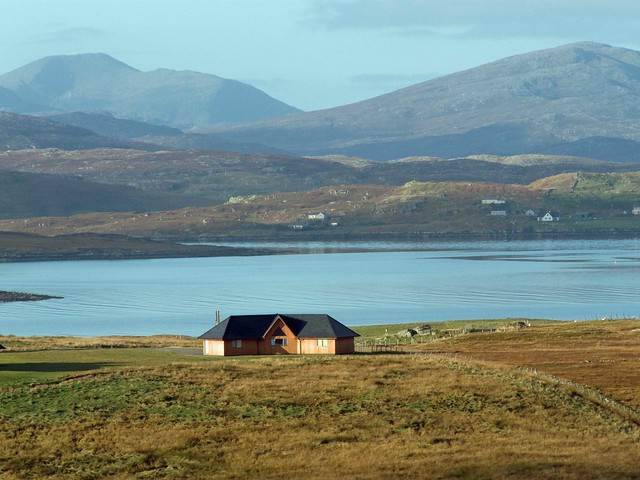Lewis constitutes the northern two thirds of the most northerly island in the Outer Hebrides (which includes Harris to the south). It is by far the most populous of the Outer Hebridean islands and, with over 20,000 inhabitants, makes up two thirds of the total population. Just over 8,000 people live in Stornoway, the largest town in the Hebrides and the administrative capital of the Western Isles.
The majority of the rest of the population live in the long line of crofting townships strung out along the west coast between Port Nis (Ness) and Càrlabhagh (Carloway). The west coast is also where you'll find the island's most interesting sites, the prehistoric remains of Dùn Chàrlabhaigh (Carloway) Broch and the impressive Calanais (Callanish) Standing Stones, the restored blackhouse village of Garenin and the Arnol Blackhouse. These can all be visited as a day trip from Stornoway, either as an organized tour or on the 'West Side Circular' bus service. The interior of the northern half is flat peat bog, hence the island's name which means 'marshy' in Gaelic. Further south, where Lewis becomes Harris, the scenery is more dramatic as the relentlessly flat landscape gives way to rocky hills, providing the backdrop to the sea-lochs that cut deep into the coast and the beautiful beaches around Uig.
History
Lewis was dominated by the Vikings, and the Norse influence can be seen in many of the place names, such as Uig (which is Norse for 'a bay'). After the end of Norwegian sovereignty in 1266, the island was ruled by the Macleods, said to be descendants of early settlers from Iceland. Control of the island was wrested from them by the Mackenzies, who then proceeded to sell it, in 1844, to Sir James Matheson. The new owner built Lews Castle in Stornoway and began to develop the infrastructure of the island as well as investing in new industries. Though many crofts were cleared and families sent to Canada, the people of Lewis fared well and certainly much better than their counterparts in the Southern Isles.
The next proprietor was Lord Leverhulme, founder of Lever Brothers, who bought the island (along with Harris) in 1918. He planned to turn Lewis into a major fishing centre and ploughed money into developing the infrastructure. He was forced to abandon his plans, however, partly because of the decline of the fishing industry, and partly owing to the growing conflict between him and the islanders returning from the war who wanted land of their own to farm. As a final benevolent gesture, Lord Leverhulme offered Lewis to the islanders, but only Stornoway Council accepted. The island was then divided into estates and sold, and hundreds emigrated.
Today the economy of Lewis is still based on the traditional industries of crofting, fishing and weaving, though there are other economic activities such as fish farming, which is now a major employer, service industries, tourism, construction and the onshore oil yard at Stornoway.
Phone code: 44 (0) 1851


